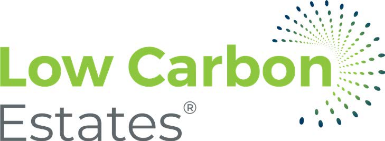Purpose of policy
- Low Carbon Estates Limited (the Employer) takes health and safety issues seriously and is committed to protecting the health and safety of its staff and all those affected by its business activities and attending its premises. This policy is intended to help the Employer achieve this by clarifying who is responsible for health and safety matters and what those responsibilities are.
- This is a statement of policy only and does not form part of your contract of employment. This policy may be amended at any time by the Employer in its absolute discretion. The Employer will review this policy at regular intervals to ensure that it is achieving its aims effectively.
Who is responsible for workplace health and safety?
Achieving a healthy and safe workplace is a collective task shared between the Employer and staff. This policy and the rules contained in it apply to all staff of the Employer, irrespective of seniority, tenure and working hours, including all employees, directors and officers, consultants and contractors, casual or agency staff, trainees, homeworkers and fixed-term staff and any volunteers. Specific responsibilities of staff are set out in the section headed “Responsibilities of all staff” below.
Employer responsibilities
The Employer is responsible for:
- taking reasonable steps to safeguard the health and safety of staff, people affected by the Employer’s business activities and of people visiting its premises;
- identifying health and safety risks and finding ways to manage or overcome them;
- providing a safe and healthy place of work and safe entry and exit arrangements, including during an emergency situation;
- providing and maintaining safe working areas, equipment and systems and, where necessary, appropriate protective clothing;
- providing safe arrangements for the use, handling, storage and transport of articles and substances;
- providing adequate information, instruction, training and supervision to enable all staff to do their work safely, to avoid hazards and to contribute positively to their own health and safety at work. The Employer will give you the opportunity to ask questions and advise who best to contact in respect of those questions, if you are unsure about how to safely carry out your work;
- ensuring any health and safety representatives receive appropriate training to carry out their functions effectively;
- providing a health and safety induction and appropriate safety training to your role, including:
- manual handling;
- control of substances hazardous to health (COSHH);
- the use of personal protective equipment (PPE);
- promoting effective communication and consultation between the Employer and staff concerning health and safety matters;
- if an epidemic or pandemic alert is issued, providing instructions, arrangements and advice to staff as to the organisation of business operations and steps to be taken to minimise the risk of infection; and
- regularly monitoring and reviewing the management of health and safety at work, making any necessary changes and bringing those to the attention of all staff
The board of directors of the Employer has overall responsibility for health and safety and has appointed Andrew Slaney as the Health and Safety Officer with day-to-day responsibility for health and safety matters.
Any concerns about health and safety matters should be notified to the Health and Safety Officer.
General staff responsibilities
All staff must:
- take reasonable care for their own health and safety and that of others who may be affected by their acts or omissions;
- co-operate with the Health and Safety Officer and the Employer generally to enable compliance with health and safety duties and requirements;
- comply with any health and safety instructions and rules, including instructions on the safe use of equipment;
- keep health and safety issues in the front of their minds and take personal responsibility for the health and safety implications of their own acts and omissions;
- keep the workplace tidy and hazard-free;
- report all health and safety concerns to the Health and Safety Officer promptly, including any potential risk, hazard or malfunction of equipment, however minor or trivial it may seem; and
- co-operate in the Employer’s investigation of any incident or accident which either has led to injury or which could have led to injury, in the Employer’s opinion.
Staff responsibilities relating to equipment
All staff must:
- use equipment as directed by any instructions given by representatives of management or contained in any written operating manual or instructions for use and any relevant training;
- report any fault with damage to or concern about any equipment (including health and safety equipment) or its use to the Health and Safety Officer, who is responsible for maintenance and safety of equipment;
- ensure that health and safety equipment is not interfered with; and
- not attempt to repair equipment unless suitably trained and authorised.
Staff responsibilities relating to accidents and first aid
All staff must:
- promptly report any accident at work involving personal injury, however trivial, to the Health and Safety Officer so that details can be recorded in the Accident Book and cooperate in any associated investigation;
- familiarise themselves with the details of first aid facilities and trained first aiders, which are available from the Health and Safety Officer;
- if an accident occurs, dial 01392 908 806 and ask for the duty first aider, giving name, location and brief details of the problem.
- The Health and Safety Officer is responsible for investigating any injuries or work-related disease, preparing and keeping accident records, and for submitting reports under the Reporting of Injuries, Diseases and Dangerous Occurrences Regulations 2013 (RIDDOR), where required.
- Given the outbreak of Coronavirus (COVID-19), it is important that all staff keep up to date with government guidance.
Staff responsibilities relating to emergency evacuation and fire
Fire and evacuation procedure
All staff must:
- familiarise themselves with the instructions about what to do if there is a fire which are displayed on the notice board in Inside Office Main Door and are available from the Health and Safety Officer;
- ensure they are aware of the location of fire extinguishers; fire exits and alternative ways of leaving the building in an emergency;
- comply with the instructions of fire wardens if there is a fire, suspected fire or fire alarm (or a practice drill for any of these scenarios);
- co-operate in fire drills and take them seriously (ensuring that any visitors to the building do the same), fire drills will be held at least once every 12 months;
- ensure that fire exits or fire notices or emergency exit signs are not obstructed or hidden at any time;
- notify the Health and Safety Officer immediately of any circumstances (for example, impaired mobility) which might hinder or delay evacuation in a fire. This will allow the Health and Safety Officer to discuss a personal evacuation plan for you, which will be shared with the fire wardens and colleagues working near to you
On discovering a fire, all staff must:
- immediately trigger the nearest fire alarm and, if time permits, call reception and notify the location of the fire; and
- attempt to tackle the fire ONLY if they have been trained or otherwise feel competent to do so. Nominated members of staff will be trained in the use of fire extinguishers.
On hearing the fire alarm, all staff must:
- remain calm and immediately evacuate the building, walking quickly without running, following any instructions of the fire wardens;
- leave without stopping to collect personal belongings;
- stay out of any lifts; and
- remain out of the building until notified by a fire warden that it is safe to re-enter.
The Health and Safety Officer is responsible for ensuring fire risk assessments take place and changes made where required, and for making sure there are regular checks of fire extinguishers, fire alarms, escape routes, signage and emergency lighting.
Risk assessments, hazardous substances, display screen equipment and manual handling
Risk assessments are simply a careful examination of what in the workplace could cause harm to people. The Employer will assess any risks and consider measures to best minimise any risk. The Employer will carry out general workplace risk assessments when required or as reasonably requested by staff. Managers must ensure that any necessary risk assessments take place and the resulting recommendations are implemented. The Health and Safety Officer is responsible for workplace risk assessments and any measures to control risks.
The use of hazardous substances at work will be avoided where possible and less hazardous alternatives will be used where available. Training on the control of substances hazardous to health (COSHH) will be provided where required.
Personal Protective Equipment (PPE) is provided where risks cannot otherwise be effectively controlled.
Staff who use a computer for prolonged periods of time should try, where possible to organise short breaks every few hours away from the computer screen but may request a workstation assessment and/or an eye test by an optician by contacting the Health and Safety Officer. The Health and Safety Officer will then provide you with more details and make arrangements if you would like to proceed. Guidance on the use of display screen equipment can also be obtained from the Health and Safety Officer.
Guidance on manual handling (for example, lifting and carrying heavy objects) can be obtained from the Health and Safety Officer and where necessary training will be provided by the Employer, but the Employer will try to minimise or avoid the need for manual handling where there is a risk of injury.
Mental health and well-being whilst working
We take the health of our staff seriously, including their mental well-being. We encourage open communication and provide resources for mental health support. We promote a healthy work-life balance through flexible working arrangements and regular breaks. We conduct regular assessments to identify and address potential health and safety risks and strongly encourage you to speak to your line manager or a colleague regarding any concerns or issues you may have. By fostering a culture of well-being, we aim to enhance productivity and create a positive workplace for all employees.
Non-compliance with health and safety rules
Any breach of health and safety rules or failure to comply with this policy will be taken very seriously and is likely to result in disciplinary action against the offender, in accordance with the Employer’s disciplinary policy, up to and including immediate dismissal.
This Health & Safety Policy was reviewed and approved by Andy Slaney on the 24/09/2024

